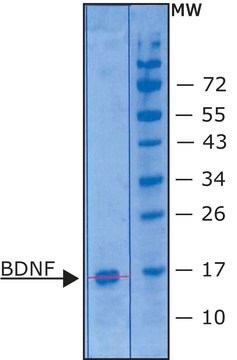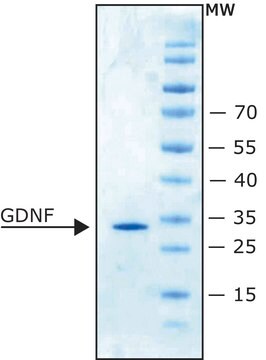C3710
Ciliary Neurotrophic Factor human
≥95% (SDS-PAGE), recombinant, expressed in E. coli, lyophilized powder, suitable for cell culture
Sinónimos:
CNTF
About This Item
Productos recomendados
Nombre del producto
Ciliary Neurotrophic Factor human, CNTF, recombinant, expressed in E. coli, lyophilized powder, suitable for cell culture
biological source
human
Quality Level
recombinant
expressed in E. coli
assay
≥95% (SDS-PAGE)
form
lyophilized powder
potency
≤325 ng/mL ED50 ((≥ 3.1 x 103 units/mg))
quality
endotoxin tested
mol wt
22.8 kDa
packaging
pkg of 10 and 20 μg
storage condition
avoid repeated freeze/thaw cycles
technique(s)
cell culture | mammalian: suitable
impurities
≤10 EU/μg
UniProt accession no.
storage temp.
−20°C
Gene Information
human ... CNTF(1270) , CNTF (1270)
General description
Application
Biochem/physiol Actions
Physical form
Analysis Note
Storage Class
13 - Non Combustible Solids
wgk_germany
WGK 3
flash_point_f
Not applicable
flash_point_c
Not applicable
ppe
Eyeshields, Gloves, type N95 (US)
Elija entre una de las versiones más recientes:
¿Ya tiene este producto?
Encuentre la documentación para los productos que ha comprado recientemente en la Biblioteca de documentos.
Los clientes también vieron
Nuestro equipo de científicos tiene experiencia en todas las áreas de investigación: Ciencias de la vida, Ciencia de los materiales, Síntesis química, Cromatografía, Analítica y muchas otras.
Póngase en contacto con el Servicio técnico










